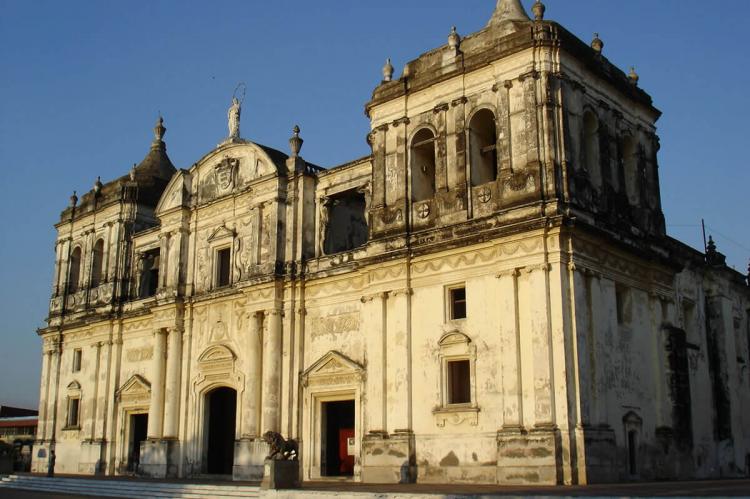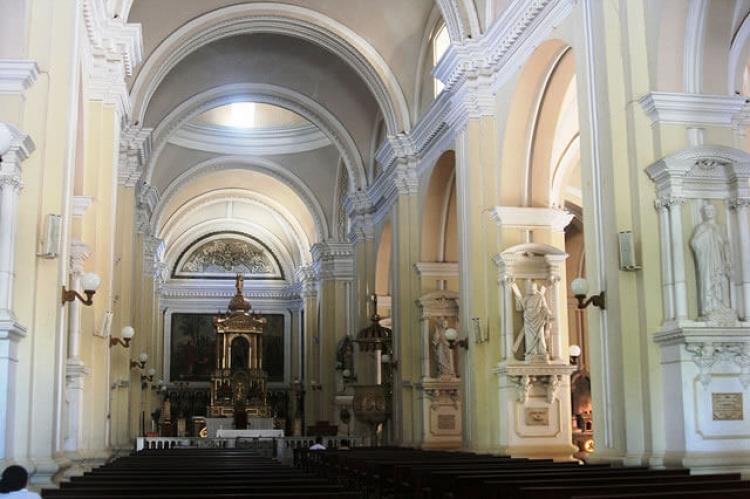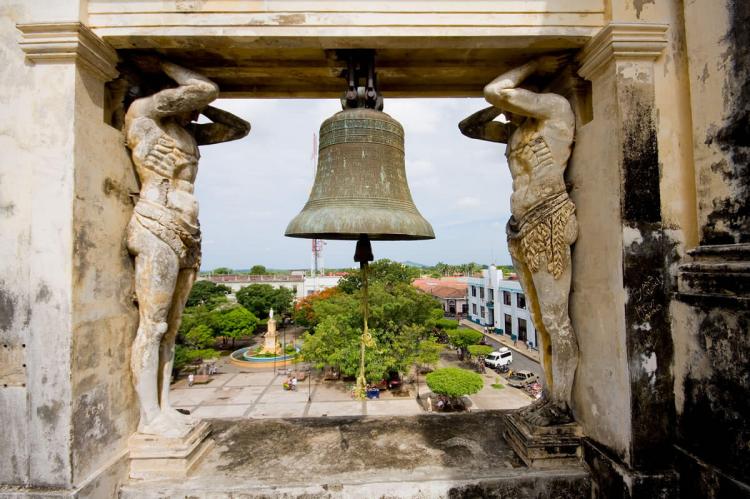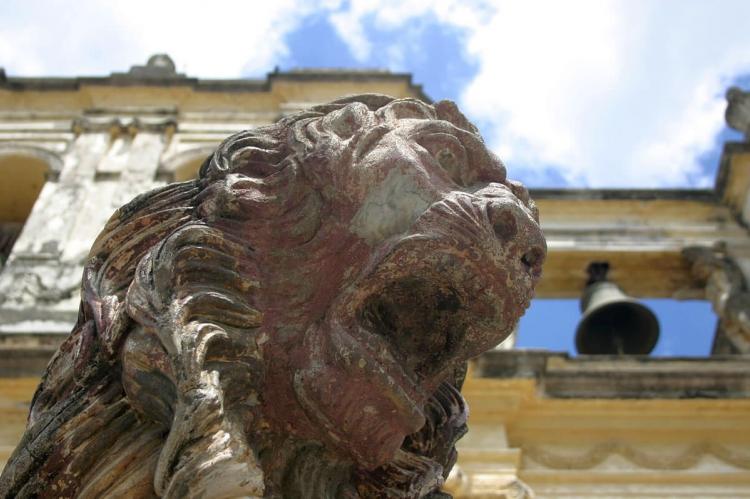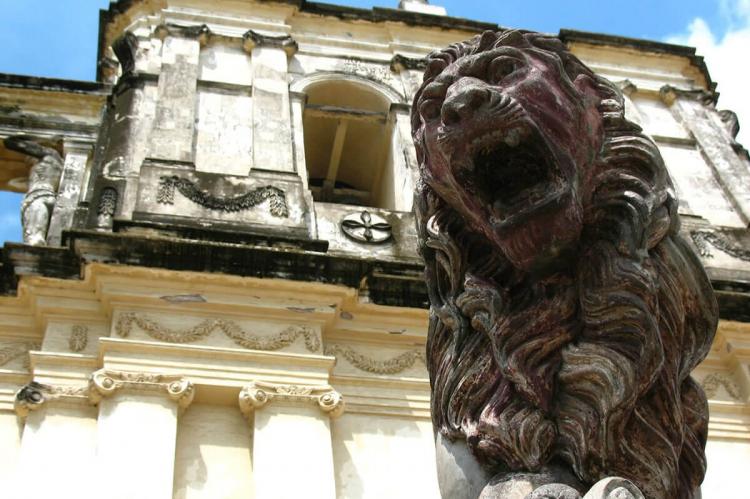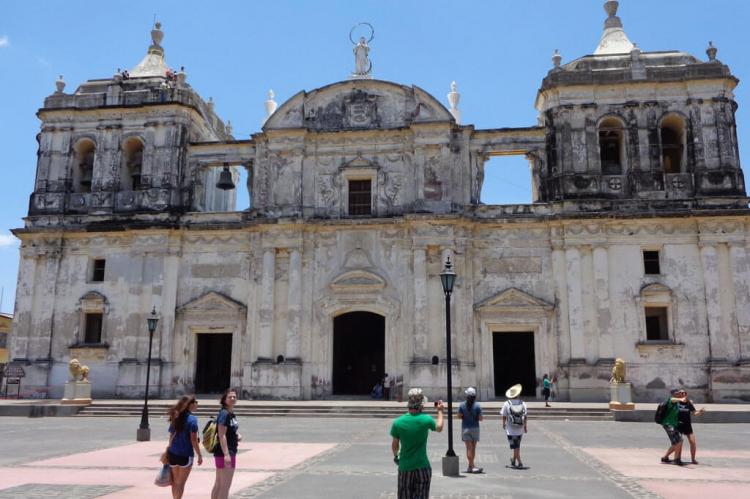León Cathedral: The Historic Heart of Nicaragua
The León Cathedral, also known as the Cathedral of the Assumption of Mary, is the largest in Central America. In 2011, it was recognized as a UNESCO World Heritage Site. Its significance lies in its architectural grandeur and historical importance, making it a cornerstone of Nicaraguan heritage.
A Pillar of Faith: The Rich History and Cultural Heritage of León Cathedral
León Cathedral, officially known as the Cathedral of the Assumption of Mary, is a historic and architectural landmark in León, Nicaragua. As the largest cathedral in Central America, it is a testament to the region's rich cultural and religious history. Built between 1747 and 1814 and consecrated by Pope Pius IX in 1860, this iconic structure was designated a UNESCO World Heritage Site in 2011. The cathedral's significance is rooted in its architectural grandeur, historical importance, and role in the local community, making it a pivotal piece of Nicaraguan heritage.
Historical Background
The construction of León Cathedral began under the supervision of the Guatemalan architect Diego José de Porres Esquivel, who designed the building to reflect Spanish Baroque and Neoclassical architectural styles. The project spanned nearly seven decades, with various artisans and laborers contributing to its completion in 1814. The cathedral's site is historically significant as it was established on the location of the first Episcopal diocese in Nicaragua, founded in 1531. Over the centuries, the cathedral has witnessed numerous historical events, including the Nicaraguan struggle for independence and various natural disasters, underscoring its resilience and the community's dedication to its preservation.
Architectural Significance
León Cathedral is an exemplary representation of colonial Baroque architecture with Neoclassical influences. The design includes a rectangular basilica layout with robust, thick walls and low towers to withstand the frequent earthquakes that affect the region. The structure's architectural features are functional and aesthetic, with buttresses and domes enhancing its stability and visual appeal.
The cathedral's interior is characterized by its spaciousness, sobriety, and natural lighting. Side chapels flank the large nave, and the altar area is richly decorated, reflecting the craftsmanship of the period. The cathedral's dome, supported by 34 smaller domes, not only provides ventilation and light but also adds to the grandeur of the structure. Additionally, the presence of seven tunnels beneath the cathedral, which connect to other churches in the city, highlights the historical and strategic significance of the building, especially during times of conflict.
Artistic Treasures
León Cathedral houses numerous artistic treasures that contribute to its cultural and religious significance. Among these are the wooden Flemish altarpiece and a series of paintings depicting the 14 Stations of the Cross by Nicaraguan artist Antonio Sarria. These works of art are integral to the cathedral's identity and reflect the region's rich artistic heritage. The cathedral also contains several important religious relics and sculptures displayed prominently within the interior spaces.
One of the most notable features is the tomb of the famous Nicaraguan poet Rubén Darío, buried in the cathedral. His tomb, located near the altar, is a site of great cultural importance and attracts visitors worldwide. Darío's contribution to literature and his connection to the cathedral highlights the intersection of cultural and religious history within this sacred space.
Conservation and Challenges
Maintaining León Cathedral involves addressing numerous challenges, from natural disasters to the wear and tear of time. The region's susceptibility to earthquakes, volcanic eruptions, and tropical storms necessitates ongoing conservation efforts to preserve the cathedral's structural integrity and artistic heritage. Restoration projects often focus on reinforcing the building's foundation, repairing damage from natural events, and preserving the artistic works housed within the cathedral.
In recent years, efforts have been made to modernize conservation techniques, incorporating advanced technology to monitor the building's condition and address issues proactively, including seismic retrofitting, climate control within the interior spaces, and regular maintenance of the artworks. The involvement of local and international conservation experts ensures that the cathedral remains protected for future generations.
Cultural and Religious Importance
León Cathedral is a vibrant center of religious and cultural life in León. It is the headquarters of the Diocese of León and hosts numerous religious ceremonies, festivals, and community events throughout the year. The cathedral's presence in the city is a testament to the local population's deep-rooted faith and cultural traditions, acting as a focal point for spiritual and social activities.
The cathedral is a major attraction for visitors and pilgrims alike, who are drawn to its spiritual ambiance and historical significance. Educational programs and interpretive tours help visitors understand the cathedral's rich history and architectural features, fostering a deeper appreciation for its cultural importance. The cathedral also plays a significant role in the local economy, with tourism contributing to the financial support needed for ongoing conservation efforts.
Conclusion
León Cathedral is a testament to Nicaragua's rich history, architectural innovation, and cultural heritage. Its blend of Baroque and Neoclassical styles and its significant historical and religious role make it an essential part of the country's cultural landscape. The cathedral thrives as a sanctuary for faith, history, and culture through dedicated conservation efforts and sustainable tourism practices. Addressing ongoing challenges with perseverance and collaboration will ensure that this historic marvel remains protected for future generations, preserving its legacy as a symbol of resilience and devotion.
